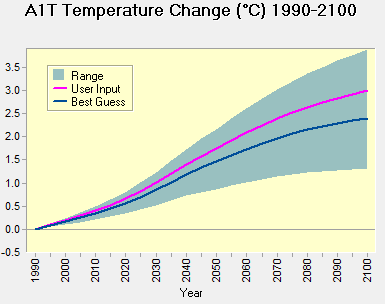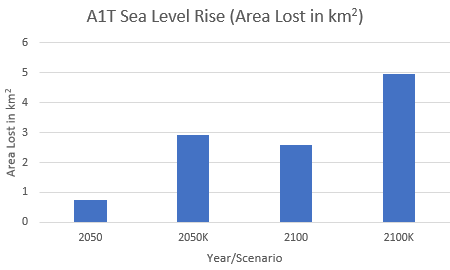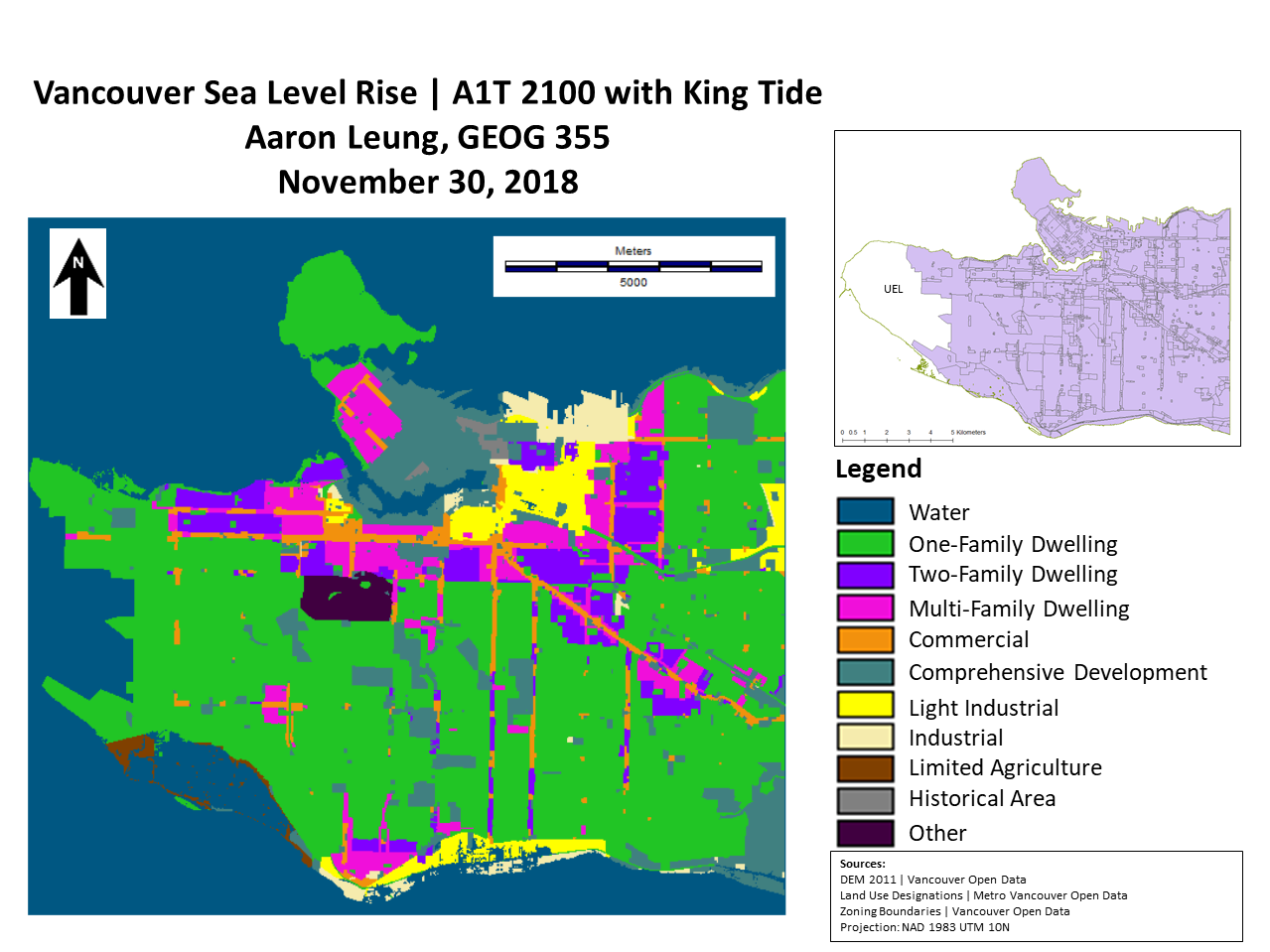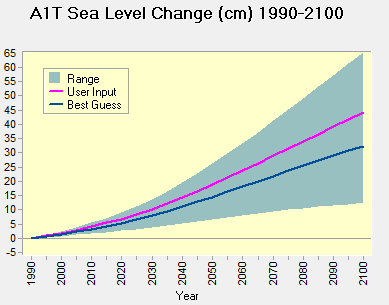The A1T (Renewable Energy/Technological Sustainability Pathway) leads to the least sea level rise and temperature change. This pathway assumes that humans reduce their dependency on fossil fuels by developing and increasing the supply of non-fossil fuel energy sources with an information-based economy. By 2100, Earth’s average temperature will increase by just under three degrees Celsius which is double the limit of the Paris Agreement, but much better than six degrees under the fossil fuel intensive scenario (UNCC, 2018).

The result is an average sea level increase of just over 40cm by 2100 and as high as 65cm. The resulting impact floods most of Vancouver’s limited agriculture area as well as light industrial lands on the Fraser. Stanley Park is also heavily impacted. Under 2050 sea level rise conditions and above, all of Vancouver’s zoning areas with the exception of “Other” will see some land lost due to sea level rise with impacts increasing into the future and through King Tide events which add up to an extra one metre of sea level rise. Single Family areas and Comprehensive Development zones are the most impacted.
Vancouver will lose up to 5 square kilometres in a king tide event in 2100 with 2.5 square kilometres being submerged under average sea level rise by 2100. Businesses and residents in the impacted area will need additional flood mitigation measures or be relocated entirely.

References
UNCC. (2018). The Paris Agreement. Retrieved from https://unfccc.int/process-and-meetings/the-paris-agreement/the-paris-agreement





